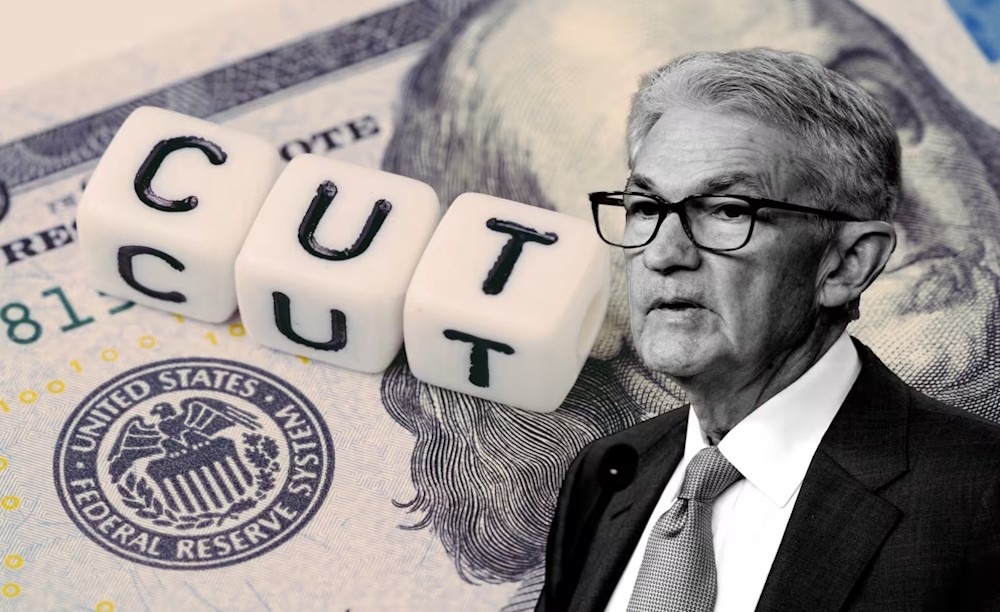
The tech-heavy Nasdaq declined by 0.3%, equivalent to 72.63 points, concluding the session at 22,261.33. Market concluded the trading session on Wednesday with mixed results, characterized by volatility. The Dow Jones Industrial Average finished higher following the anticipated quarter percentage point reduction in interest rates by the Federal Reserve. However, Federal Reserve Chairman Jerome Powell indicated that the rate cut does not signify the onset of an extended cycle of monetary policy easing. The Nasdaq concluded the trading session in negative territory, whereas the S&P 500 remained relatively stable with minimal fluctuations.
The Dow Jones Industrial Average experienced an increase of 0.6%, translating to a gain of 260.42 points, ultimately closing at 46,018.32 points. The S&P 500 experienced a decline of 0.1%, translating to a decrease of 6.41 points, concluding the session at 6,600.35 points. Stocks in the financial and consumer staples sectors emerged as the most significant gainers.The Financials Select Sector SPDR experienced a 1% increase. The Consumer Staples Select Sector SPDR experienced an increase of 0.6%. The Technology Select Sector SPDR experienced a decline of 0.4%. Seven of the 11 sectors of the benchmark index concluded in positive territory. The CBOE Volatility Index, often referred to as the fear gauge, experienced a decline of 3.91%, settling at 15.72. On the NYSE, decliners surpassed advancers with a ratio of 1.02 to 1. On the Nasdaq, a ratio of 1.1-to-1 indicated a preference for declining issues. On Wednesday, a total of 18.91 billion shares changed hands, surpassing the 20-session average of 16.47 billion.
On the Nasdaq, 122 new highs were recorded alongside 45 new lows. In the S&P 500, there were 18 new 52-week highs and five new lows recorded. The Federal Reserve declared a reduction of 25 basis points in interest rates following the conclusion of its two-day FOMC meeting on Wednesday. The decision was eagerly awaited. The central bank’s benchmark policy rate is now positioned within the range of 4-4.25%. The Federal Reserve’s most recent reduction in interest rates occurred in December 2024, amounting to 25 basis points. The announcement made yesterday was anticipated by many, with investors showing greater interest in the remarks from the Fed chairman. Powell referenced a deteriorating labor market during his post-meeting press conference as the rationale for reducing interest rates and indicated the possibility of two additional 25 basis point cuts for the remainder of the year. However, Powell also stated that the rate cut does not signify the commencement of an extended cycle of monetary policy easing. He also articulated his perspective on the escalating risks associated with employment in relation to inflation, emphasizing that the challenges posed by inflation require meticulous management.
On Wednesday, financial stocks experienced an uptick, contributing to an increase in the Dow. Shares of American Express Company increased by 2.7%, whereas JPMorgan Chase & Co. experienced a rise of 0.8%. American Express holds a Zacks Rank of #3. The comprehensive list of today’s Zacks #1 Rank stocks is available here. Nonetheless, technology equities experienced a decline on Wednesday. Shares of Broadcom Inc. experienced a decline of 3.8%, whereas Oracle Corporation concluded the trading session down by 1.7%. The Federal Reserve has adopted a hawkish stance regarding rate cuts in 2026, with officials anticipating only a single reduction, which falls short of market expectations that foresee two or three cuts.
In the latest economic report, the Commerce Department indicated that housing starts experienced a decline of 8.5% in August, reaching a seasonally adjusted annual rate of 1.307 million units. In August, single-family housing experienced a decline of 7%, reaching a seasonally adjusted annual rate of 890,000, marking a two-and-a-half-year low. In August, building permits experienced a decline of 3.7%, reaching a seasonally adjusted annualized rate of 1.312 million, marking the lowest level since May 2020. This figure was also below the analysts’ expectations of 1.37 million.
